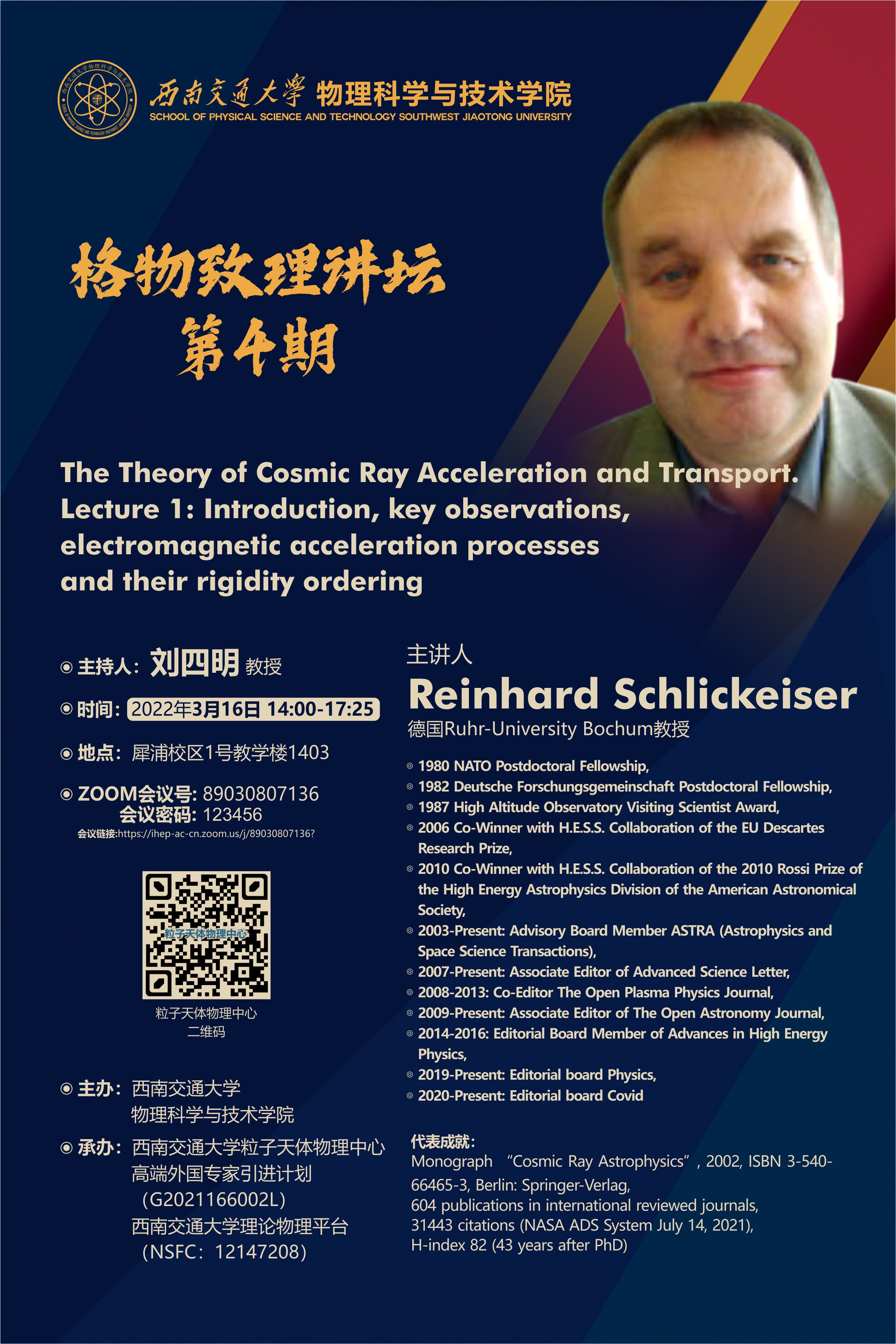主持人:刘四明 教授
时间:2022年3月16日14:00-17:25
地点:犀浦校区1号教学楼1403
ZOOM会议号: 89030807136 会议密码123456
(会议链接:: https://ihep-ac-cn.zoom.us/j/89030807136?)
主讲人:Reinhard Schlickeiser 德国Ruhr-University Bochum教授
题目:The Theory of Cosmic Ray Acceleration and Transport.
Lecture 1:Introduction, key observations, electromagnetic acceleration processes and their rigidity ordering
摘要:After a short introduction I start with the key observations of galactic cosmic rays: (1)the high isotropy of their arrival directions, (2) 100 times more hadrons than electrons at relativistic energies, (3) nearly constant flux over the last 109 years. These observations point to electromagnetic acceleration processes which order particle distribution functions with respect to their rigidity R = p/|Z|. To a large extent, our progress in understanding cosmic ray dynamics in cosmic plasmas depends on our understanding of the magnetic and electric field fluctuations.
Because of the observed energy equipartition between electromagnetic fields and cosmic ray particles, a fully complete description of their
dynamics is necessary accounting for their various nonlinear coupling and interaction processes: to determine the particle’s
phase space density from the collisionless Boltzmann equation we have to know the electromagnetic field; but to determine the electromagnetic field from Maxwell’s equations we have to know the phase space density of the particles determining the charge and urrent densities. We are facing the fundamental problem of plasma physics: the plasma particles determine the electromagnetic fields and vice versa in a highly nonlinear way.
In order to proceed with a solution of this coupled problem two opposite points of view can be taken:
1) the test fluctuation approach, discussed in Lectures 1 and 2, in which the plasma
particle distribution functions are assumed to be given, so that the resulting electromagnetic field and its properties can be calculated.
2) the test particle approach, discussed in Lectures 2 and 3, in which the electromagnetic field is assumed to be given, so that the response of the particles can be calculated.A consistent theory should combine these two approaches at least to a level of avoiding dramatic contradictions.




